(Well, okay, it was a “Pathogenic Microbiology Lab”, not a “Park”, but whatever).
Antibiotic Susceptibility of a Poor, Innocent Microbe
Objective:Experience the awesome power of the mighty Antibiotic Susceptibility Test, wielded against an unsuspecting bacterial organism!
Introduction:
Every day, billions of innocent bacteria are ruthlessly slaughtered by antibiotic substances introduced into their callous, inconsiderate hosts. Condemned to death as nuisances due to nothing more than the potential inconvenience of debilitation, tissue necrosis, death, halitosis, and other minor problems, the unstoppable might of all medical science is focussed on our prokaryotic friends like medical professionals around the world focussing the rays of the sun through a thousand magnifying glasses to obliterate innocent prokaryotic “ants”.
The ?-lactam antibiotics – the blahblahcillins (Penicillin, Ampicillin, etc.) and the Cefablahblah compounds (Cephalosporin, Cephalothin, Cefuroxime, etc.) all interfere with the formation of the bacterial cell wall – loosely analogous to the human epidermis. This treatment viciously targets the hardest-working, actively-reproducing bacteria, spilling their guts as they attempt binary fission, while leaving the lazy, dormant microbes alone. Gram-negative bacteria are somewhat protected from this torture by their outer membrane, but some (such as ampicillin) can affect even some of them. Gram-positives, with their simple structure, are hardest hit. A few microbes have learned to counter this by secreting an enzyme which disables many of these drugs, though medical science has countered with clavulanic acid – an inhibitor of the ?-lactamase enzymes. Enzymes resistant to inhibition by clavulanic acid are being developed as part of this continuing arms race.
Chloramphenicol is an artificially manufactured bacteria-poisoning chemical synthesized in laboratories (though it was originally obtained during interrogation of a captured Streptomyces species) which interferes with protein synthesis at the 50s ribosome. Erythromycin has the same affect, by a slightly different mechanism, and is a macrolide – a class of large molecules with lactone rings which resemble in shape the poisoned ninja throwing-stars seen in movies. Both of these chemicals are bacteriostatic rather than bacteriocidal, but are broad-spectrum. Chloramphenicol’s devious action sometimes backfires on a small number of people, causing potentially fatal aplastic anemia.
The Sulfonamides are also bacteriostatic, and are competetive inhibitors of enzymes that convert the nutrient PABA into biochemical products vital for prokaryotic health. Much like a hypoglycemic person with diarrhea given a “cupcake” made entirely out of Olestra® and Sucralose, the microbial victim of this chemical ingests it but finds that it merely inconveniences the metabolic processes rather than feeding them.
Tetracycline (the first of the Tetracycline-type antibiotics) and Tobramycin (an Aminoglycoside) both jam the gears of protein synthesis, inhibiting the action of the ribosome in the former case, and actively causing erroneous protein formation in the latter. The latter effect is outright bacteriocidal, causing the poor bacterium’s protein assembly systems to make broken enzymes until the cell’s protein factory is bankrupt and has to lay all the enzymes off. Tetracyclines appear to only slow down the cell, but in the cutthroat competition for cellular activity in the human body, this stumbling can be a death sentence for the business of prokaryotic replication.
In order to determine which of these lethal agents to deploy against the oppressed bacteria, a medical professional may capture a microbe and torturously test various agents on it, watching without emotion to see which ones destroy the microbe most efficiently. This awful, coldly clinical process is standardized in the Medical Microbiologist Field Manuals on Interrogation as the “Kirby-Bauer”[1] antibiotic susceptibility test. In these tests, 6mm diameter paper disks soaked with various antibiotics in specific amounts, is pressed onto a growing young microbe culture to see which ones are most destructive, leaving desolate areas devoid of life in the culture…
Recently, we got to do this..
Materials and Methods:
A colony of Pseudomonas aeruginosa was lured into a culture tube with the promise of free candy. Happily replicating, this culture was transported to a secret location containing Mueller-Hinton agar. 100?l of this culture was told that it had won an all-expense-paid stay at a four-star hotel with room-service, and was plated onto the agar. The culture was then strapped down and tortured for its secrets by application of 12 antibiotic-soaked disks. The torture was performed at 37°C for 24 hours, and the results measured with a ruler.
Results:
The defiant Pseudomonas organism bravely withstood the application of Ampicillin, Cephalothin, Chloramphenicol, “Triple Sulfa”, Nafcillin, Cefazolin, Amoxicillin with clavulanic acid, Cefuroxime, and Penicillin G. Erythromycin seemed to cause the subject some discomfort. It was not quite able to grow to the edge of the antibiotic disk all the way around but was able to get within less than a millimeter of it, even touching it in a few spots. Tetracycline was unbearable to the subject, who was limited to a 11mm (diameter) zone of inhibition around the Tetracycline-containing disk. Finally, Tobramycin (zone of inhibition approximately 23mm) finished breaking of the subject, who then confessed to several murders of immunocompromised individuals, robbing a “Wal-Mart”, and once molesting an archeaean of the genus Thermoplasma. Investigations may already be underway to determine the authenticity of these confessions. Then again, they may not.
Conclusions and Discussion:
Pseudomonas aeruginosa is a hardy little bugger who can put up with a wide variety of antibiotic insults. Its weak point appears to be its ribosomal machinery, as this was the target of the three drugs which had any apparent effect. Should intelligence indicate the threat of attack by the terrorist Pseudomonas organization, ribosome-targeting, protein-synthesis-inhibiting agents should be deployed as a countermeasure.
References:
[1] – Bauer AW, Kirby WM, Sherris JC, Turck M, “Antibiotic susceptibility testing by a standardized single disk method” Am J Clin Pathol. 1966 Apr;45(4):493-6
[2] –Tortora GJ, Funke BR, and Case CL, “Microbiology – An Introduction (sixth edition)” 1997, Benjamin/Cummings Publishing Company, Menlo Park, CA
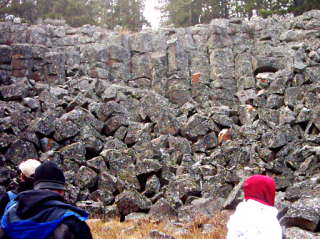
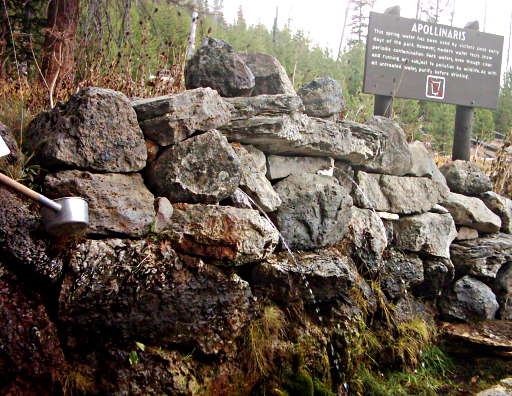
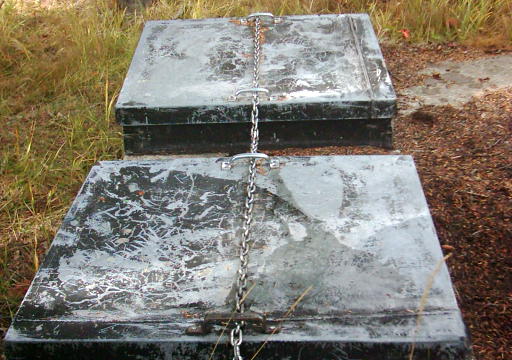
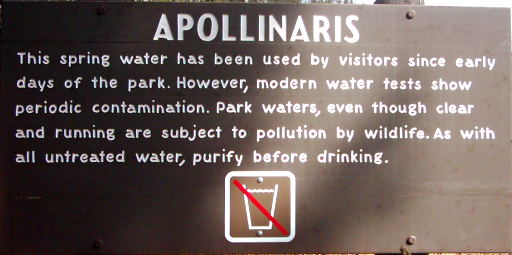
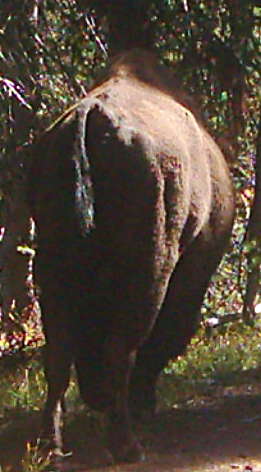 Oh, right. Natural bottled-spring-water flavor. Hey, it’s natural, it’s got to be good for you, right?
Oh, right. Natural bottled-spring-water flavor. Hey, it’s natural, it’s got to be good for you, right?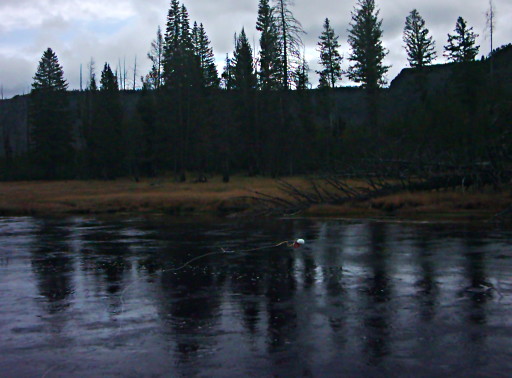
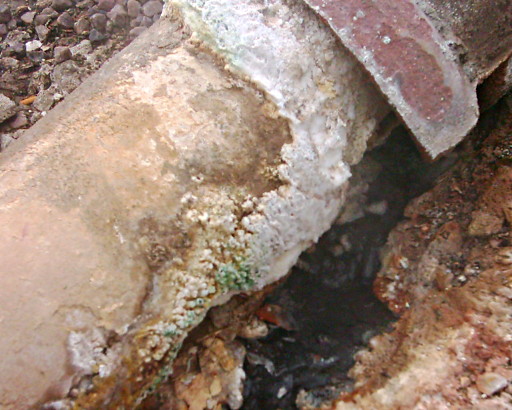
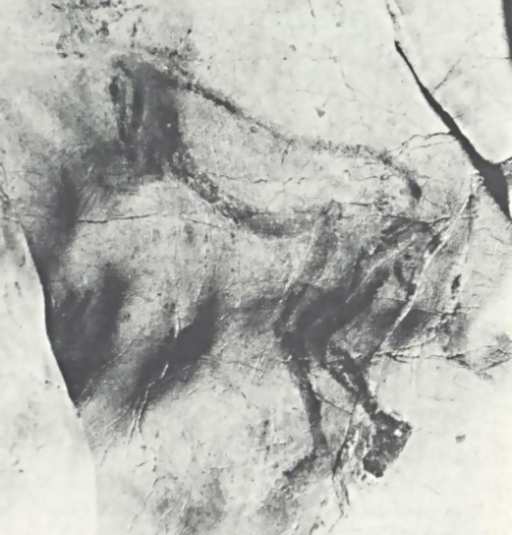
 Okay…to me the “head” looks like an indistinct smear, with spots that a human mind – tuned to recognize patterns, especially faces, even if the patterns don’t actually exist – might interpret as some kind of face. To me, it looks kind of like a crudely-drawn cartoon-animal face, with overwhelmed-Charlie-Brown-style bugeyes, a button nose, and the tongue hanging out of one side of its mouth. Yet, somehow, I don’t feel inclined to suggest that this is what is actually there. Personally, I’d be more inclined to suspect that the artist (estimated to have lived 13000-15000 years ago) had trouble finishing the drawing and gave up. Yet if you poke around for information about this image, you find all kinds of breathless prose about it. So, where does all the poetic language about the possible “meaning” and interpretation of the Trois-Frères “Sorcerer” come from?
Okay…to me the “head” looks like an indistinct smear, with spots that a human mind – tuned to recognize patterns, especially faces, even if the patterns don’t actually exist – might interpret as some kind of face. To me, it looks kind of like a crudely-drawn cartoon-animal face, with overwhelmed-Charlie-Brown-style bugeyes, a button nose, and the tongue hanging out of one side of its mouth. Yet, somehow, I don’t feel inclined to suggest that this is what is actually there. Personally, I’d be more inclined to suspect that the artist (estimated to have lived 13000-15000 years ago) had trouble finishing the drawing and gave up. Yet if you poke around for information about this image, you find all kinds of breathless prose about it. So, where does all the poetic language about the possible “meaning” and interpretation of the Trois-Frères “Sorcerer” come from?